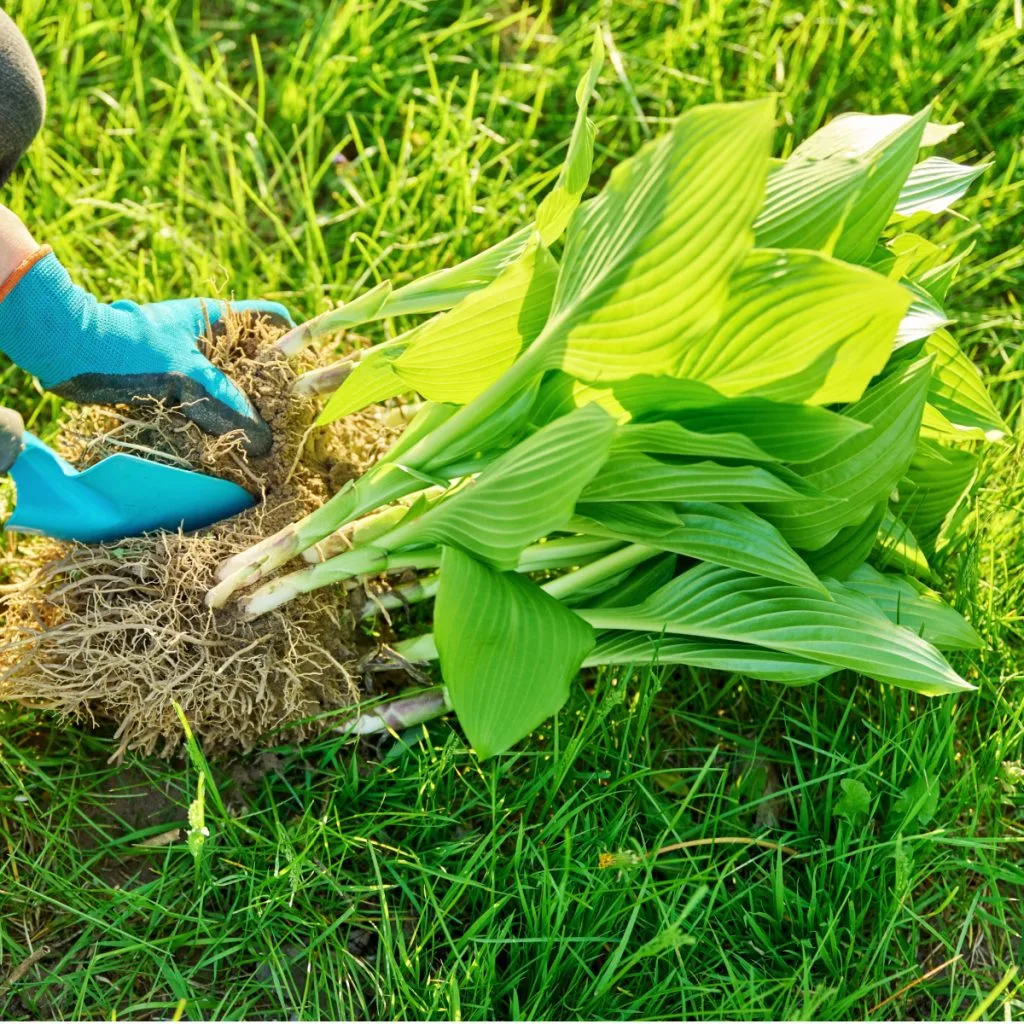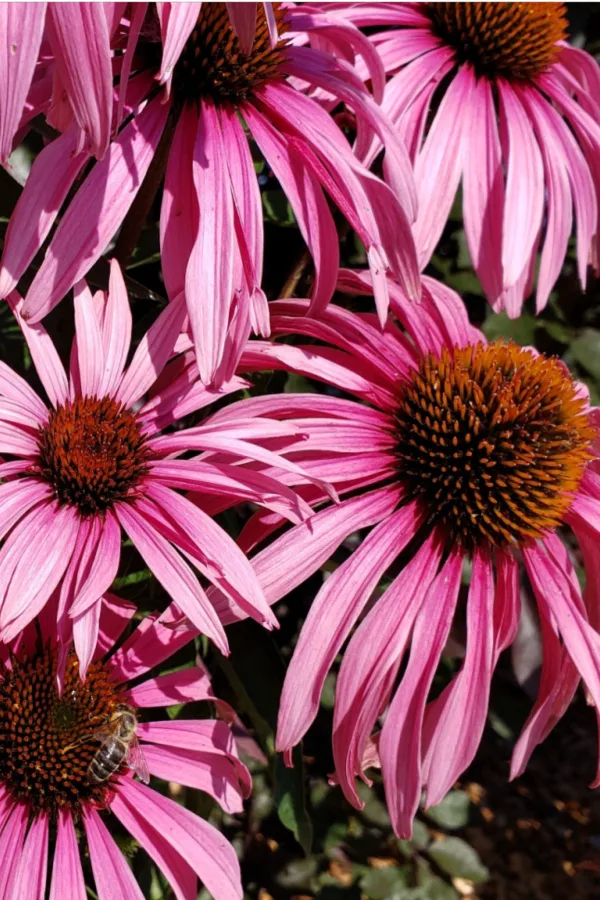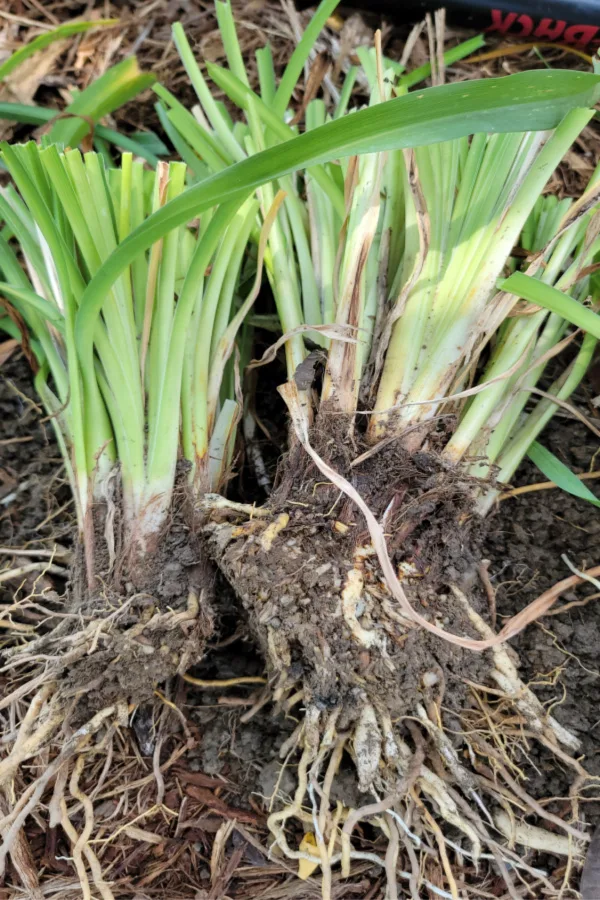One of the best and easiest ways to keep your flowerbeds healthy and strong and add more flower power to your beds without having to purchase expensive plants is to divide and transplant your perennials – and early fall just happens to be the perfect time to do it!
Not only does regular dividing play a key role in keeping flowerbeds more manageable, it can also help your plants to bloom more vigorously than ever. Dividing also has a wonderful additional benefit – it provides you with a whole slew of new transplants to fill your beds with more foliage and color than ever – and all for free!
Unfortunately, when perennials grow in the same space for too many years, their roots become crowded. When that occurs, the root-bound plants begin to have more and more difficulty drawing nutrients from the soil. Even worse, they struggle to retain and absorb moisture as well.

All of these issues together can result in weaker foliage up top, and less energy for blooming. In fact, overcrowded plant foliage and root structure are usually the two main culprits when perennials fail to bloom.
That is exactly why dividing plants on a regular basis (usually every three to five years) is vital. It keeps a plant’s roots strong, healthy, and helps them more easily find nutrients as they grow. But even more important, dividing allows you to create extra plants. And those extra plants can play a major role in helping to make maintaining your flowerbeds easier than ever.
How To Divide & Transplant Perennials In The Fall
One of the best ways to control weeds in your flowerbeds is by filling them with more plants. The tighter and more closely foliage can grow, the less likely weeds and weed seeds can ever find a home. And there is no better way to fill your beds than with your own free perennial transplants. And as the weather cool at the end of the growing season, it’s time to jump into action!
Late summer and early fall are the best times to dig up and divide a large majority of perennials. By digging plants up and dividing and transplanting in the cool autumn air, it allows the new divisions plenty of time to settle in and establish their roots before winter sets in.

Although you can divide most perennials at any point of the growing season, fall really is the ideal time. Unfortunately, when you divide in the spring or summer, plants often can’t recover quickly enough to still bloom or fill out their foliage in the same growing season.
But with fall planting, perennials have enough time to establish their roots before going dormant for winter. By the following spring, the plants are over the shock of transplanting, and ready to grow right from the start.
The Simple Steps To Dividing & Transplanting Perennials In The Fall
Dividing and transplanting perennials couldn’t be easier in the fall! Start by picking out the largest of your plants for dividing. Not only will bigger plants give you the most new transplants, they are also the plants most in need of division.
Dig Around The Root Zone – How To Divide Perennials In The Fall
Always use a sharp spade or shovel to dig up plants. Dull blades can cut and injure root systems, where as a clean cut will heal much more quickly. Begin by digging a few inches beyond the outer edge of a plant’s root zone. In nearly all cases, the root zones will line up with the base of a plant’s foliage.

Dig around the entire plant and then lift up from the ground. Be sure to dig deep enough to remove the base of the roots. Don’t fret if you happen to slice off a few outer roots. Perennials can handle a bit of damage, but the more intact the roots, the better the chance of transplanting success.
One of the best hints of all when dividing is to turn your plants over before cutting them into new sections. Turn the plant over so that the foliage is facing down into the ground. This allows you to see the entire root structure and makes dividing a snap.
Use a sharp shovel or a garden knife and divide by cutting straight down through the root zone. Serrated garden knifes are great for this, making clean cuts through the toughest of perennial root systems. Affiliate Product Link: The Original Hori Hori Namibagata Japanese Stainless Steel Garden Knife
No matter what you use, the real key to success is to split each plant into even sections based upon the size of the root ball. Remember that the size of the new root ball will determine the size of the plant the following year.

Replanting – How To Divide & Transplant Perennials In The Fall
One of the biggest keys to success when dividing perennials is to replant your new divisions as quickly as possible. Plant foliage and their roots can dry out quickly. The faster you transplant, the more chance for success.
If you don’t have space, or are not sure where you will be placing the new divisions, pot the transplants up to use at a later date or put them into an open space in your garden. This can act as a holding bed, and allow the roots to develop and be ready for easy transplanting later.
When transplanting, dig the new hole two to three times the diameter and about three to four inches deeper than the size of the new root ball. This will allow plenty of loose soil space for the perennial to expand and set its roots quickly.
When planting, always add in generous amounts of compost to each hole. If no compost is available, use a good potting soil mix instead. This loose, nutrient-filled soil will help the roots to quickly establish before winter sets in.

Water Is The Key – How To Divide Perennials In The Fall
More than anything else, water is the biggest key to a transplant’s success. Water the roots well at planting time, and be sure to give the new divisions plenty of water through late fall.
Transplants may lose some or nearly all of their foliage in the dividing and transplanting process. This is normal and does not mean the root structure has died. Continue providing water two to three times a week. New growth should appear by the time fall sets in, and the plants will be ready to roll next spring.
Here is to dividing your perennials this fall, and to filling your flowerbeds with big foliage and color next year – all for free! For more great info on fall perennial care, check out our article on what to do with daisies in the fall.
This Is My Garden
Follow Our Facebook Page For Great Gardening Tips And Advice! This Is My Garden Facebook Page
This Is My Garden is a garden website created by gardeners, for gardeners. Jim and Mary Competti have been writing gardening, DIY and recipe articles and books and speaking for over 15 years from their 46 acre Ohio farm. They publish three articles every week, 52 weeks a year. Sign up today to follow via email, or follow along!
